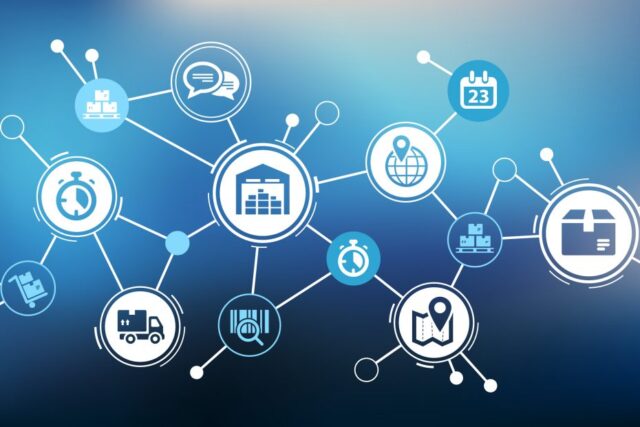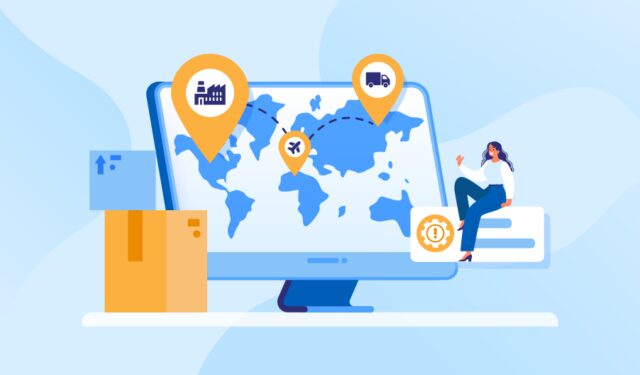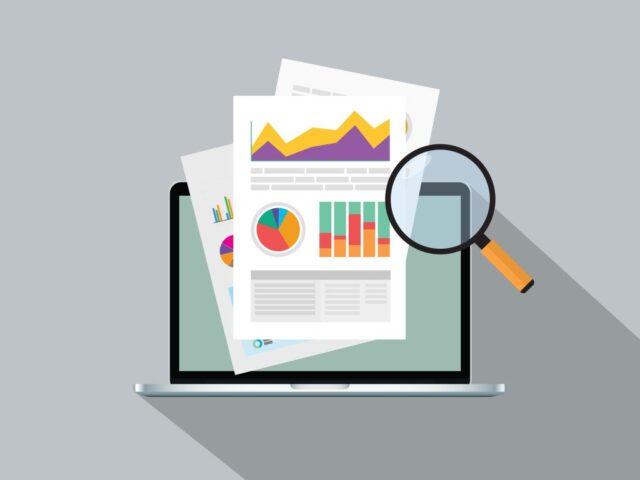
Today, software supply chains are a huge risk factor for companies. They are a swamp most companies have no other choice but to swim across. Why? For one, using third-party vendors and cloud tech makes a lot of sense business-wise. They cut back on costs, reduce the workspace, limit your staff and streamline product launches. BUT they also expose you to a lot of threats and security issues. In this article, we’re going to investigate what a software supply chain is? How to manage security within it, and what process to take into account when implementing a sound security strategy.

What is a software supply chain?
A software supply chain is a term that refers to the process of getting an application from its conception to its distribution. It’s the whole “enchilada” so to speak. From the moment the idea pops into someone’s head to the moment the software is retired and mothballed. This includes your software’s entire lifecycle. It is a delicate and highly complex process — one that takes into account a lot of departments and individuals. Not only from within your own company but externally, as in outside vendors and service providers. That’s why it’s important to find a software supply chain management team like Apiiro to improve your security.
A software supply chain can be broken down into three main stages: development, testing, and deployment.

Development
Development takes into account coding, staging, mock-ups, and IT and tech. This stage is itself broken up into different phases. In most companies, those stages are planning, analysis, design, implementation, development, testing, integration, and maintenance.
Testing
The testing stage is not only a key part of development but a critical phase in the whole software’s lifecycle, so important that many companies have designated entire departments for it. More so, now with shift-left protocols being implemented globally at most successful start-ups and tech businesses.

Deployment
Deployment is the final phase is the final step in a software’s lifecycle. This stage is taken into account from day one, and its main goal is to deliver the final product to the consumer through different channels — unlike testing, where deployment is achieved in a quarantined environment, deployment launches the product into a live highly hostile production pipeline.
All these stages work independently but are also concurrently interrelated with one another. It’s an incredibly complex dance, one with a lot of moving parts. Deployment requires testing, and testing requires the help of development once a bug is uncovered, and then the new update – with a bug fix – needs to be deployed. And so forth, and round and round we go.
What is Software Supply Chain Management
Software supply chain risk management is a process by which the risks associated with software supply chains are managed. The risks typically include intellectual property, security, and licensing. It’s important to understand that the more complex the system, the more complicated, or convoluted, the more it has a statistical propensity for chaos — the more error-prone. This is chaos theory 101, the rules of entropy. The bigger your business, the larger your staff, and the more outside vendors you require to function the more exposed to risk and threats you are.

The software supply chain risk management process steps
Software supply chain risk management is a process by which the risks associated with software supply chains are managed. The risks typically include intellectual property, security, and licensing. These are a company’s main concerns.
The process of software supply chain risk management consists of four steps:
Identifying the Supply Chain Risk
The supply chain is a series of connections between the manufacturer and the end customer. Identifying the risk in the supply chain can help to avoid potential problems.
There are six types of risks: operational, financial, strategic, customer service, political and environmental. The risk can be identified by assessing each part of the supply chain.

Evaluating the Risk
The potential for attacks on software supply chains is a serious risk to the businesses and individuals that use them.
The security risks are not limited to the software itself, but also extend to the hardware and networks that it relies on for operation. It is important to evaluate and rate your risks. This will help you understand where to better position your investments. What risks or threats are imminent and constant. Which are more damaging than others. And which can be put on the back burner for the time being.
Mitigating the Risk
The risk of cyber attacks is a concern for all companies, especially those that rely on software supply chains. Currently, we have seen several high-profile cyberattacks in recent years, and these are likely just the beginning. It is predicted that by 2020, cyberattacks will cost the world $6 trillion annually. To mitigate this risk, companies need to understand where they are vulnerable and how they can protect themselves from these threats. In this step, you’ll create plans and stratagems to not only protect yourself but better respond to a threat or a gut punch if you’re breached.

Managing the Risk
Risk management is an important part of the business. It is not just about how to handle the risk but also about how to avoid it. The key is to know the risks and what can happen if they happen. In software supply chain management this step takes into account how you react to an attack — mainly, how fast you can get off the mat and continue working. The biggest revenue lost and biggest issues when it comes to attacks isn’t the attack itself but the downtime some of them crush companies with.
Why implement software supply chain management?
That’s why it’s important to have a well-established supply chain risk management process and protocol
For example, you might have your systems, platforms, and schematics airtight — but what about those that weren’t but, or managed by you? How many services do you have right now, integral to your business, that aren’t yours? Think about it. For a second. For example, do you use Slacks to communicate with your staff members? How certain are you of that company’s security protocols? What about services that are integral to your internet provider? Think of how many outside vendors you have, and now ask yourself: “how well do you know them? And their security team or SOC team?”









